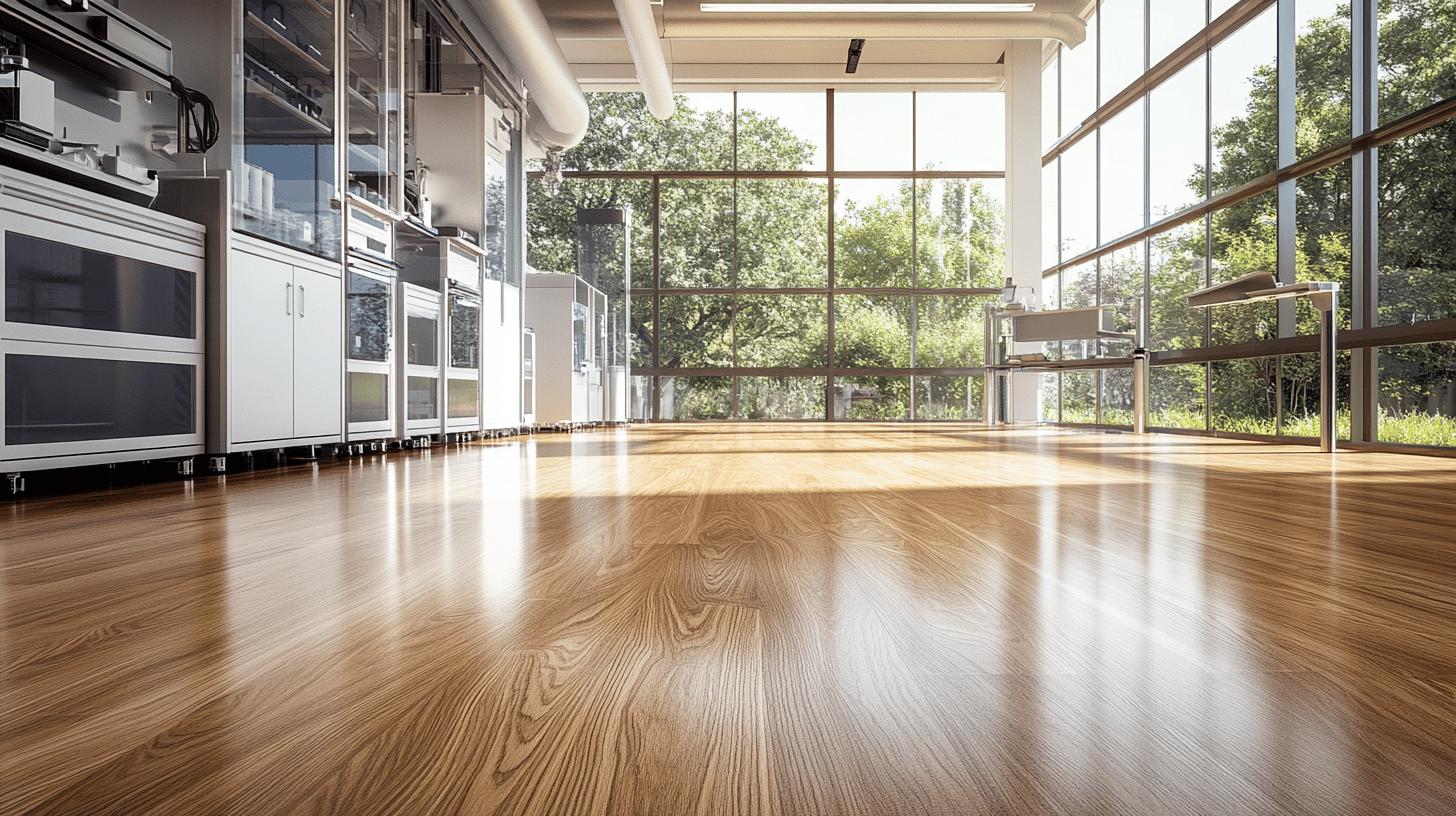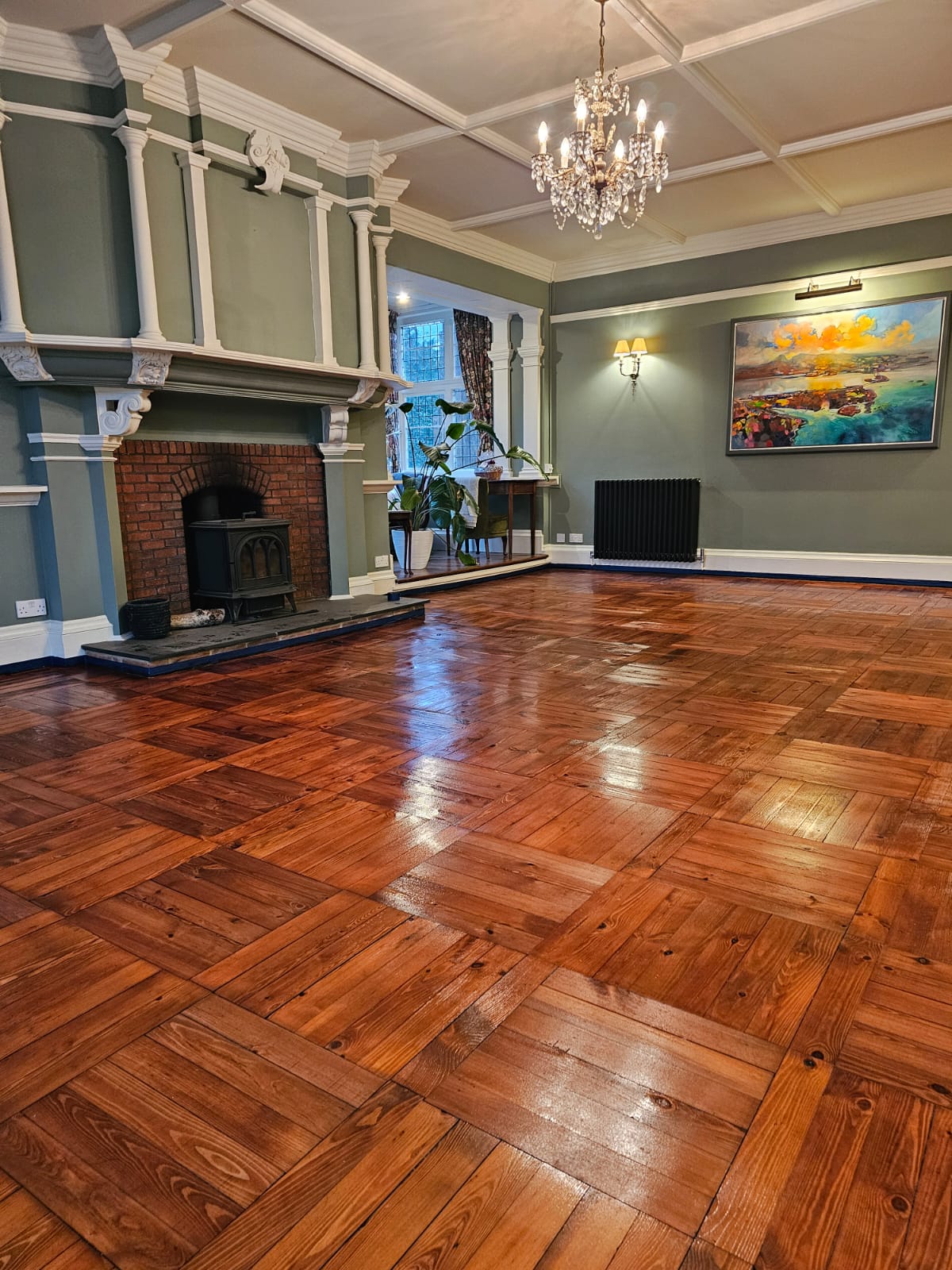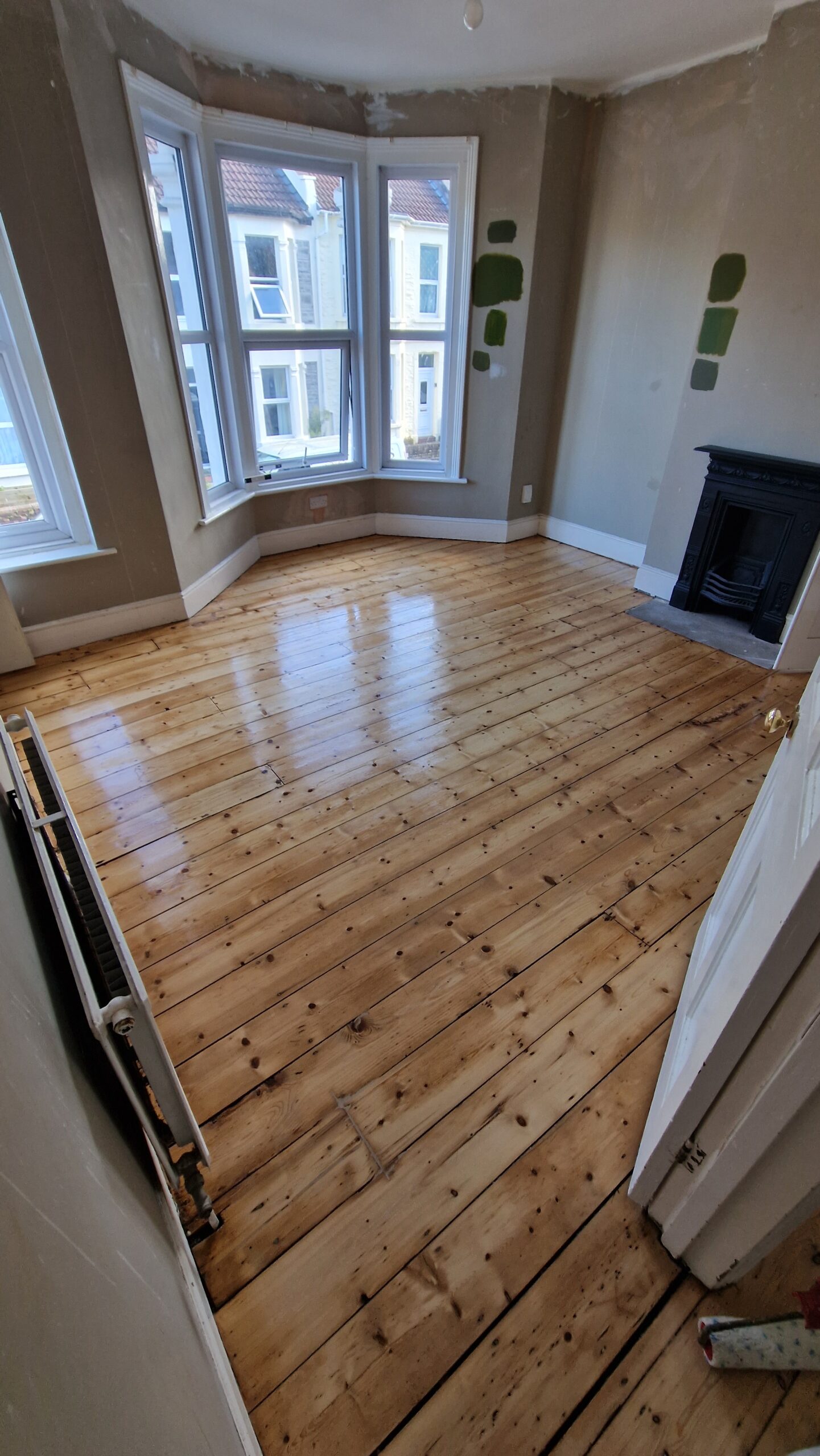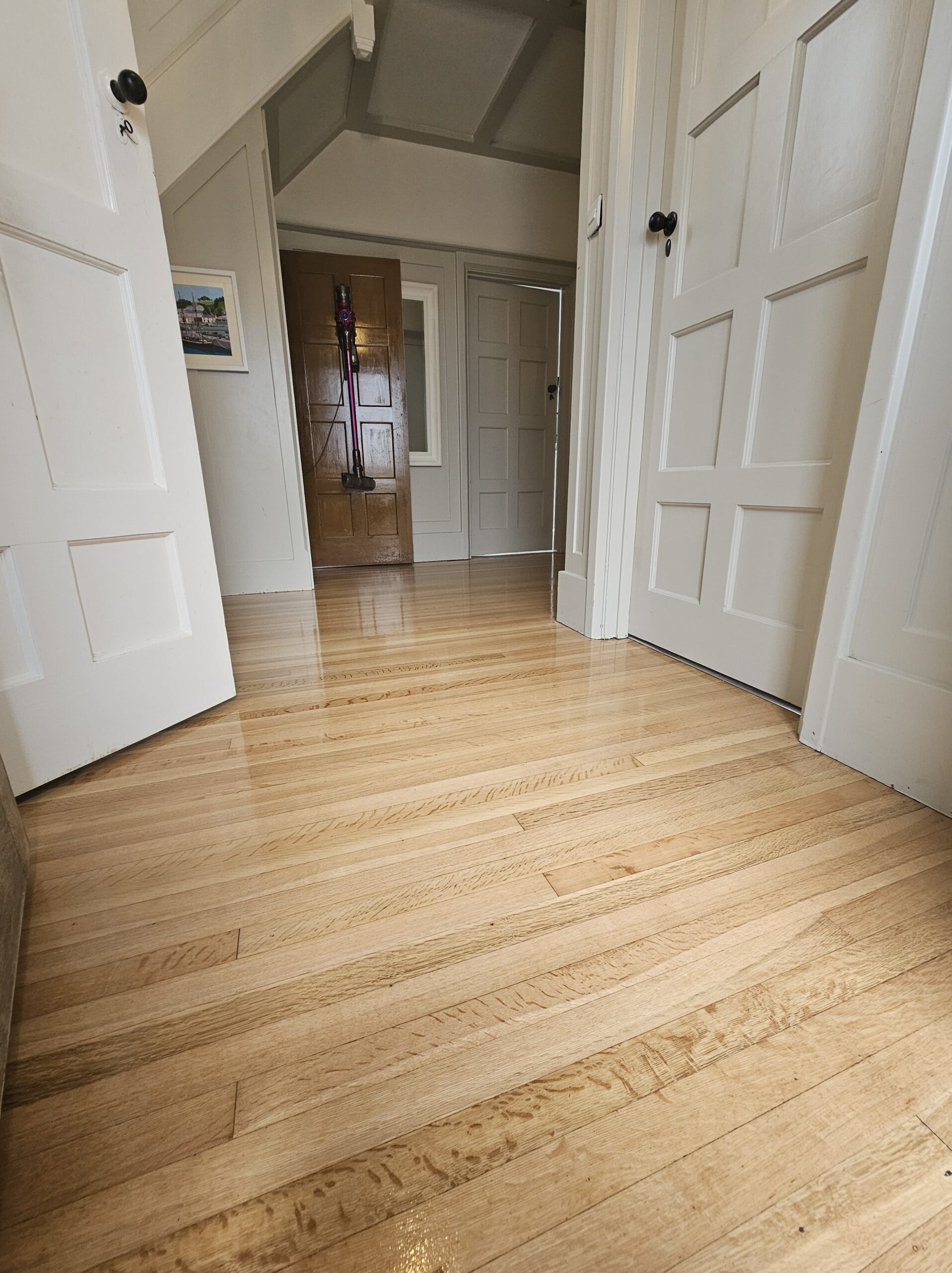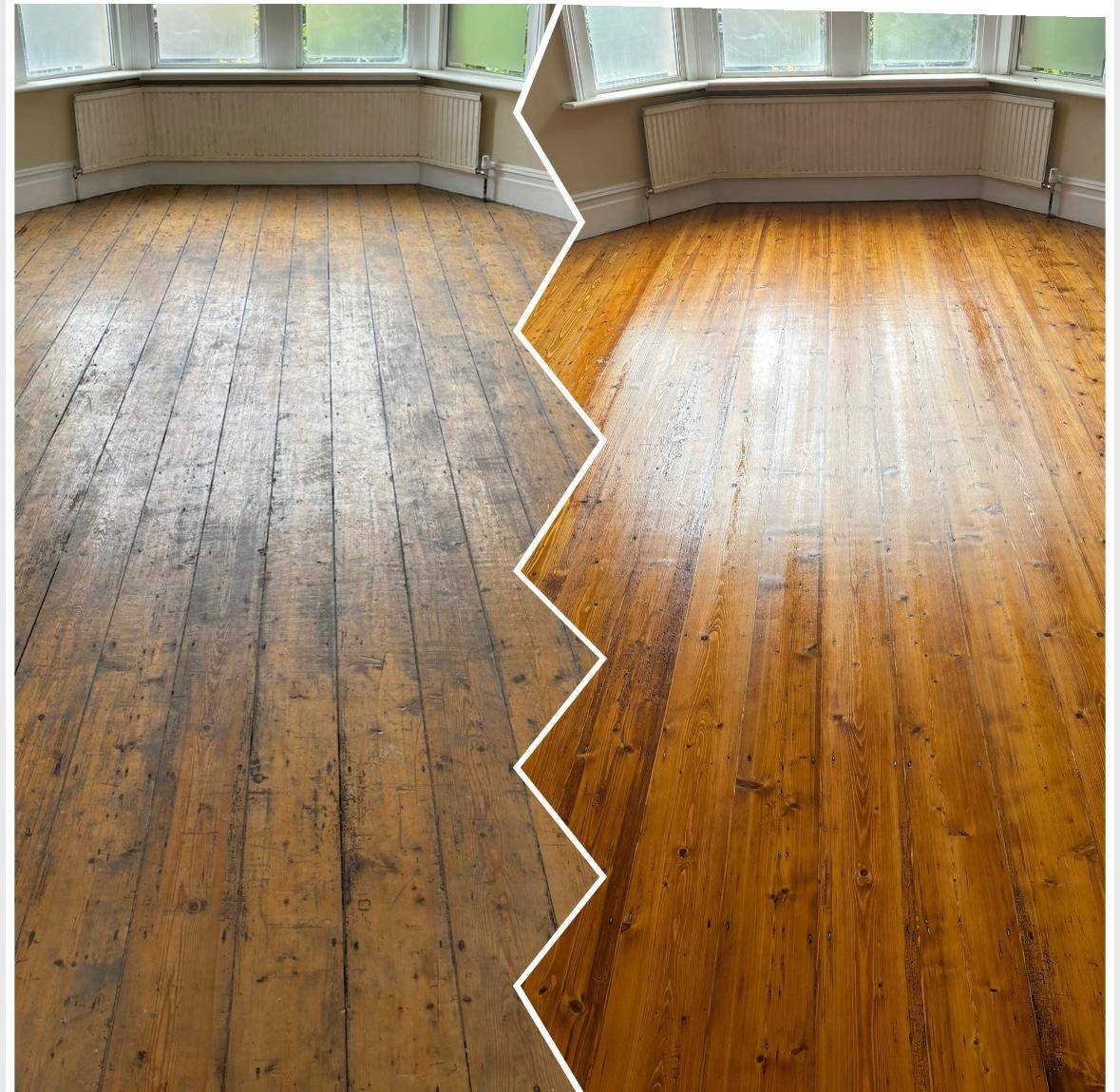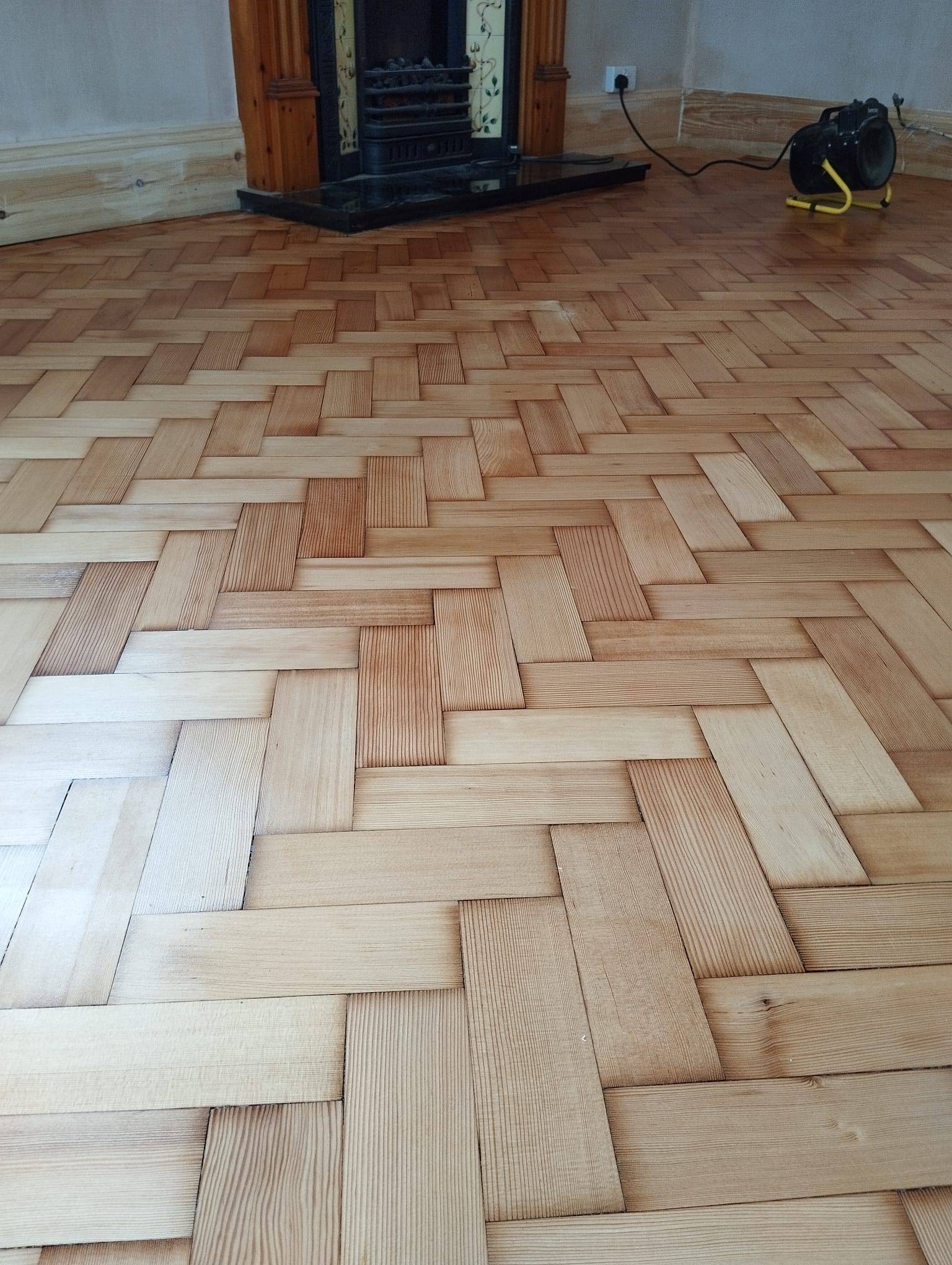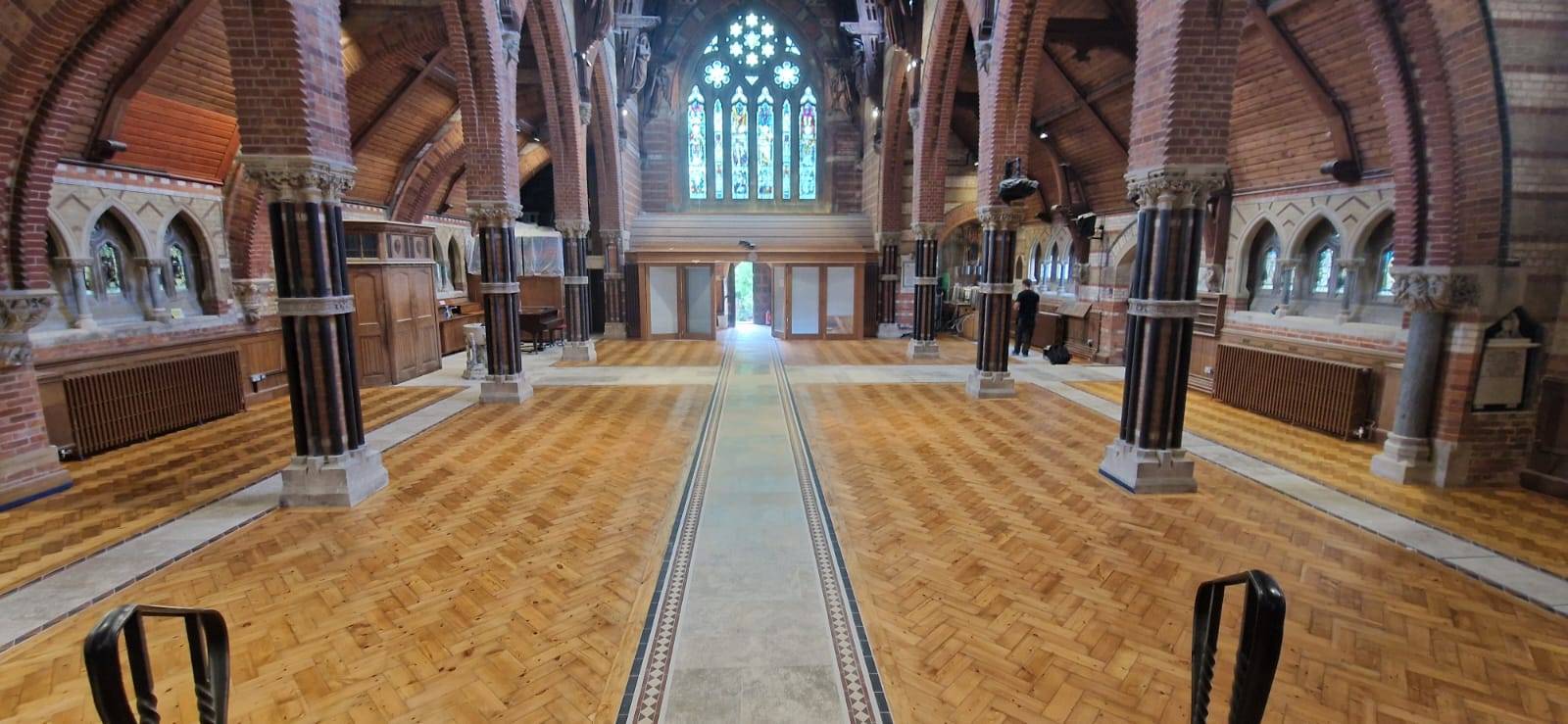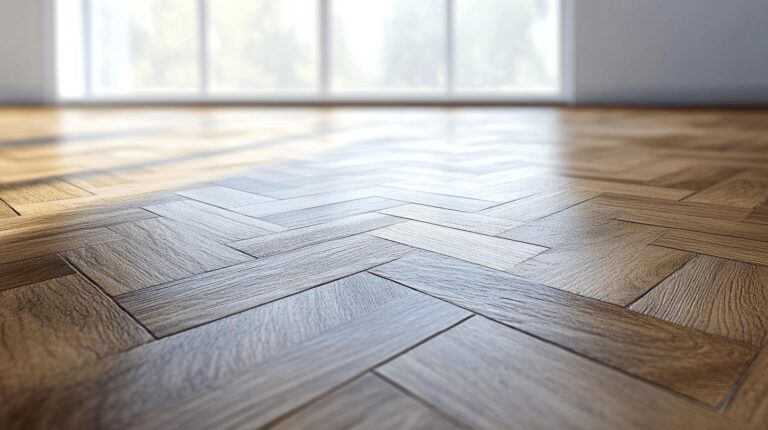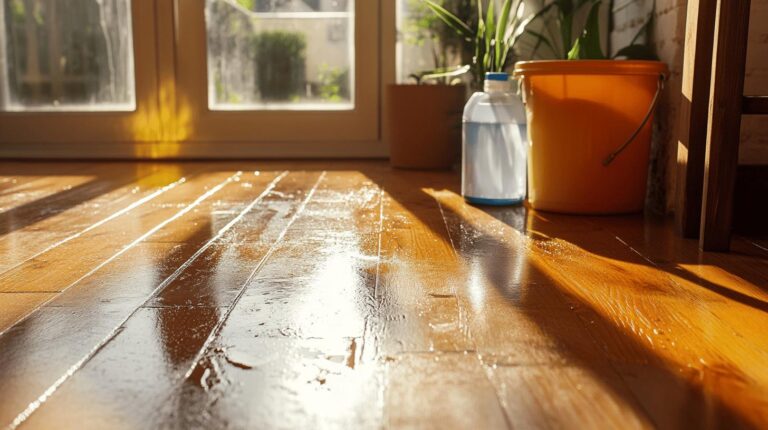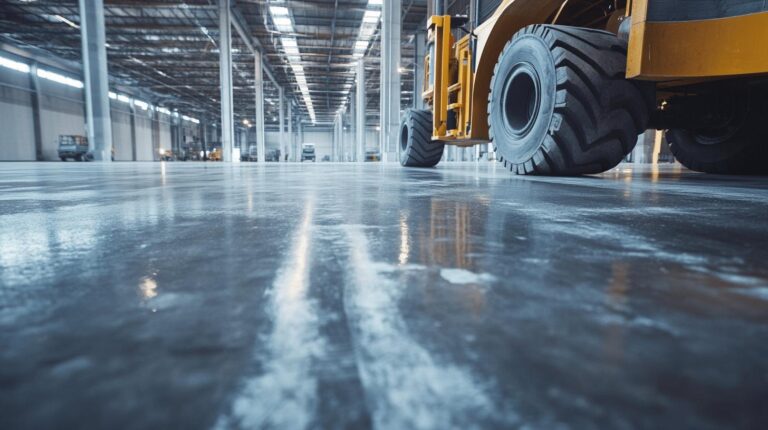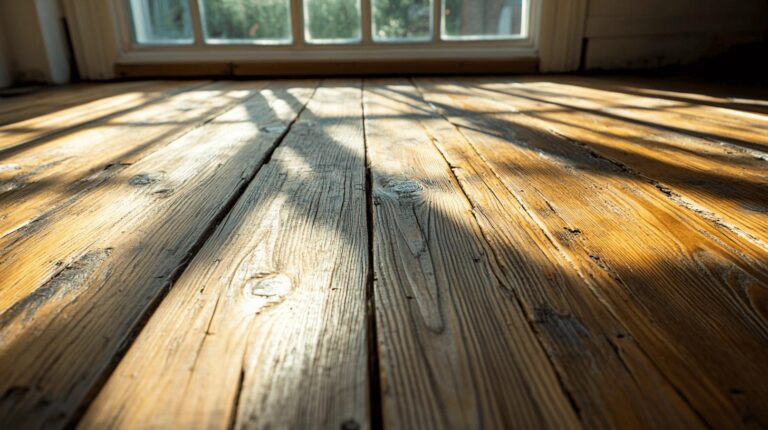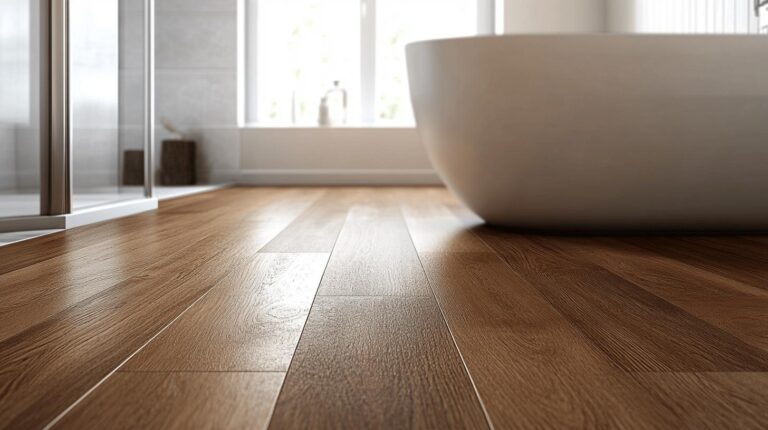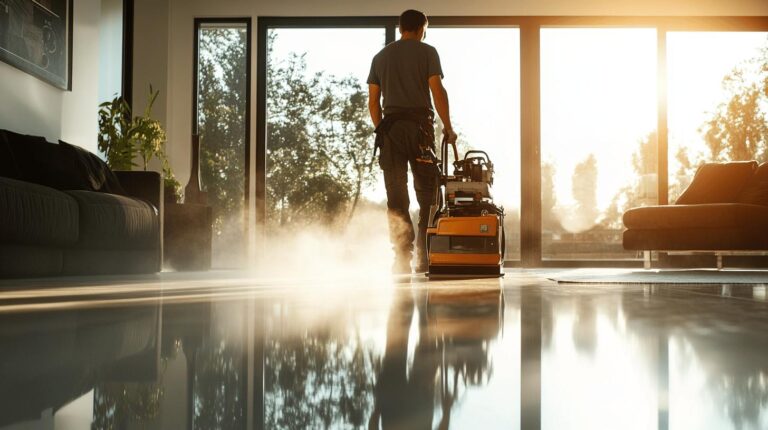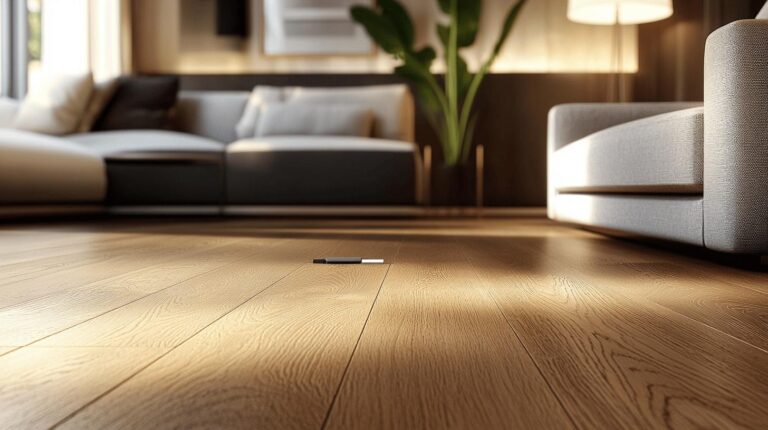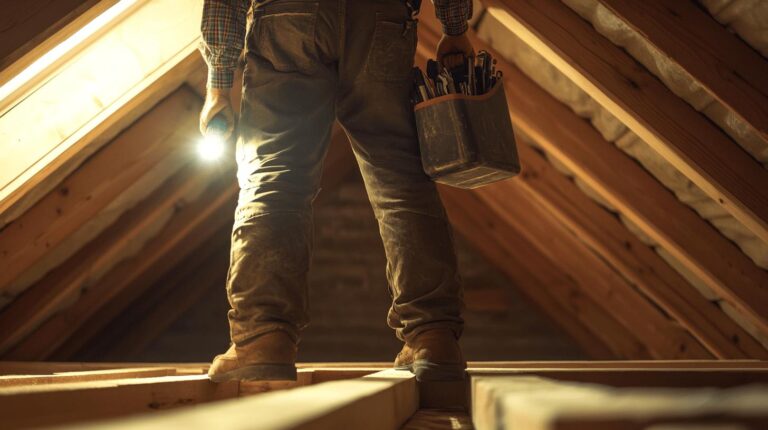When it comes to laboratory environments, the flooring beneath your feet might not be the first consideration. However, chemical-resistant properties can transform essential spaces designed for research and innovation. Imagine a flooring solution that resists chemical spills as effortlessly as a pelican gliding through water. Laboratory wood flooring, specifically engineered for such conditions, offers chemical resistance, combining the natural beauty of wood with the functional toughness necessary for high-performance scientific work. In the upcoming discussion, explore how this innovative flooring solution enhances laboratory safety and efficiency.
Understanding Chemical Resistance in Laboratory Wood Flooring
Chemical resistance in laboratory flooring is imperative due to the frequent exposure to harsh substances that can compromise floor integrity and safety. Laboratories are environments where accidental chemical spills are a common occurrence. The flooring needs to withstand these incidents without deteriorating, ensuring a safe and efficient space for research and scientific development. Without adequate chemical resistance, the flooring could suffer damage, leading to costly repairs and potential safety hazards.
Wood flooring solutions achieve chemical resistance through specialised treatments and finishes that protect the wood from corrosive substances. These treatments include applying sealants and coatings that create a barrier against chemicals. The use of high-quality, engineered wood can also enhance durability and resistance, as it is designed to withstand various environmental stressors. By selecting appropriate finishes, like polyurethane or epoxy coatings, laboratories can ensure their wood flooring remains resilient against chemical exposure, maintaining both appearance and functionality over time.
The benefits of chemical-resistant wood flooring extend beyond mere durability; they significantly enhance laboratory safety and operational efficiency. With a chemically resistant surface, the risk of accidents due to floor degradation is minimised, allowing uninterrupted workflow. Moreover, these floors are easier to clean and maintain, reducing downtime and maintenance costs. In environments where precision and safety are paramount, chemical-resistant wood flooring provides a stable and reliable foundation for scientific endeavours.
Comparing Laboratory Wood Flooring to Other Materials
When comparing wood flooring to epoxy resin and vinyl for laboratory use, each material offers distinct advantages and limitations, particularly in terms of chemical resistance and cost. Epoxy resin flooring is renowned for its chemically hardened surface, providing exceptional resistance to a wide range of chemicals. This makes it a preferred choice in environments with frequent chemical exposure. However, the installation and maintenance costs can be relatively high. Vinyl flooring, on the other hand, is a cost-effective alternative that also offers satisfactory chemical resistance when properly sealed. It is durable and easier to install compared to epoxy resin, making it a practical choice for laboratories where budget constraints exist. Wood flooring, with the application of specialised chemical-resistant finishes such as polyurethane or epoxy coatings, can achieve comparable chemical resistance. Although initial costs might be higher than vinyl, wood provides a unique aesthetic appeal and warmth that synthetic materials lack.
Wood flooring’s aesthetic and environmental benefits make it an attractive option for laboratory settings where visual appeal and sustainability are valued. Unlike synthetic options, wood offers a natural look that can create a more inviting and pleasant environment, potentially improving the overall atmosphere of the workspace. Additionally, wood is a renewable resource, making it a more environmentally friendly choice compared to vinyl and epoxy, which are petroleum-based. With proper maintenance and the use of engineered wood products, laboratories can enjoy the durability and resilience of wood flooring. This combination of aesthetic value and environmental consideration makes wood flooring a compelling option for laboratories seeking a balance between functionality and design.
Installation Considerations for Laboratory Wood Flooring

Proper installation of laboratory wood flooring is critical to ensure its longevity and effectiveness, particularly in environments where chemical exposure is prevalent. Failure to install flooring correctly can lead to premature wear, compromised chemical resistance, and safety hazards. Therefore, meticulous planning and execution are paramount to achieving a seamless and durable finish that meets the specific needs of a laboratory setting.
The installation process for laboratory wood flooring involves several key steps. Initially, site preparation is essential, which includes assessing the existing subfloor and ensuring it is free from moisture and contaminants that could affect adhesion. The selection of materials follows, with emphasis on choosing high-quality, engineered wood that is compatible with chemical-resistant finishes. During the installation, precision in laying the flooring is vital to maintain a consistent and seamless surface. The application of specialised coatings or sealants is the final step, providing the necessary barrier against chemical exposure and enhancing the floor’s durability.
Engaging professional installation services, such as Ryan’s Restoration, is crucial to achieving the desired outcome. Professionals bring expertise and experience that ensure all aspects of the installation are handled with precision. They adhere to safety standards and use advanced techniques to deliver a flooring solution that is not only aesthetically pleasing but also functionally robust. By relying on expert services, laboratories can avoid common pitfalls and ensure their wood flooring provides a reliable foundation for their scientific endeavours.
Maintenance and Longevity of Chemical-Resistant Wood Flooring
Daily maintenance of chemical-resistant wood flooring in laboratories is essential to preserving its durability and appearance. Regular cleaning helps prevent the accumulation of dirt and debris, which can cause abrasions and, over time, degrade the protective coatings. It is important to use cleaners that are compatible with the chemical-resistant finish to avoid compromising the floor’s integrity. Frequent inspections for any signs of wear or damage allow for prompt repairs, ensuring the floor continues to provide a safe and stable environment.
For long-term care, implementing strategies that enhance the flooring’s lifespan is crucial. Applying protective coatings periodically can reinforce the floor’s resistance to chemicals and physical wear. Additionally, maintaining a controlled environment with stable humidity levels prevents the wood from expanding or contracting, thus reducing the risk of damage. Investing in quality entrance mats can also minimise the amount of dirt and moisture brought into the laboratory, further protecting the flooring. By establishing a comprehensive maintenance schedule, laboratories can maximise the longevity and functionality of their wood flooring.
- Establish a regular cleaning schedule.
- Use cleaners compatible with chemical-resistant finishes.
- Inspect and repair any signs of wear promptly.
- Apply protective coatings periodically.
- Use quality entrance mats to reduce dirt and moisture.
Case Studies: Real-World Applications of Laboratory Wood Flooring
Case studies provide valuable insights into the practical advantages of chemical-resistant wood flooring within laboratory environments. They demonstrate how these flooring solutions have been effectively applied to enhance lab operations, safety, and efficiency. By examining real-world applications, we can better understand the benefits and challenges associated with implementing wood flooring in settings where chemical resistance is crucial.
In one notable case, a research facility opted to upgrade its laboratory with chemical-resistant wood flooring to address recurrent issues with their existing surfaces. Prior to the installation, the laboratory faced frequent maintenance challenges due to chemical spills and abrasions that compromised the integrity of their floors. The decision to switch to wood flooring with specialised protective coatings resulted in a significant reduction in maintenance costs and downtime. The facility reported an improvement in workflow efficiency, as the durable surface allowed for seamless operations without the interruptions previously experienced.
Pharmaceutical Laboratory Success Story
A pharmaceutical laboratory provides a compelling example of how wood flooring met stringent safety and operational requirements. Faced with the need for a flooring solution that could withstand rigorous cleaning protocols and chemical exposure, the laboratory chose engineered wood with a robust, chemical-resistant finish. This choice not only adhered to safety guidelines but also contributed to a more aesthetically pleasing and comfortable work environment. The wood flooring’s ability to maintain its integrity under demanding conditions underscored its suitability for such specialised settings, offering enhanced safety and workflow efficiency.
Lessons from these examples highlight the importance of selecting the right materials and finishes for laboratory settings. Chemical-resistant wood flooring not only provides aesthetic and environmental benefits but also supports operational efficiency and safety. By learning from successful implementations, other laboratories can make informed decisions to optimise their flooring solutions and enhance their research capabilities.
Pharmaceutical Laboratory Success Story
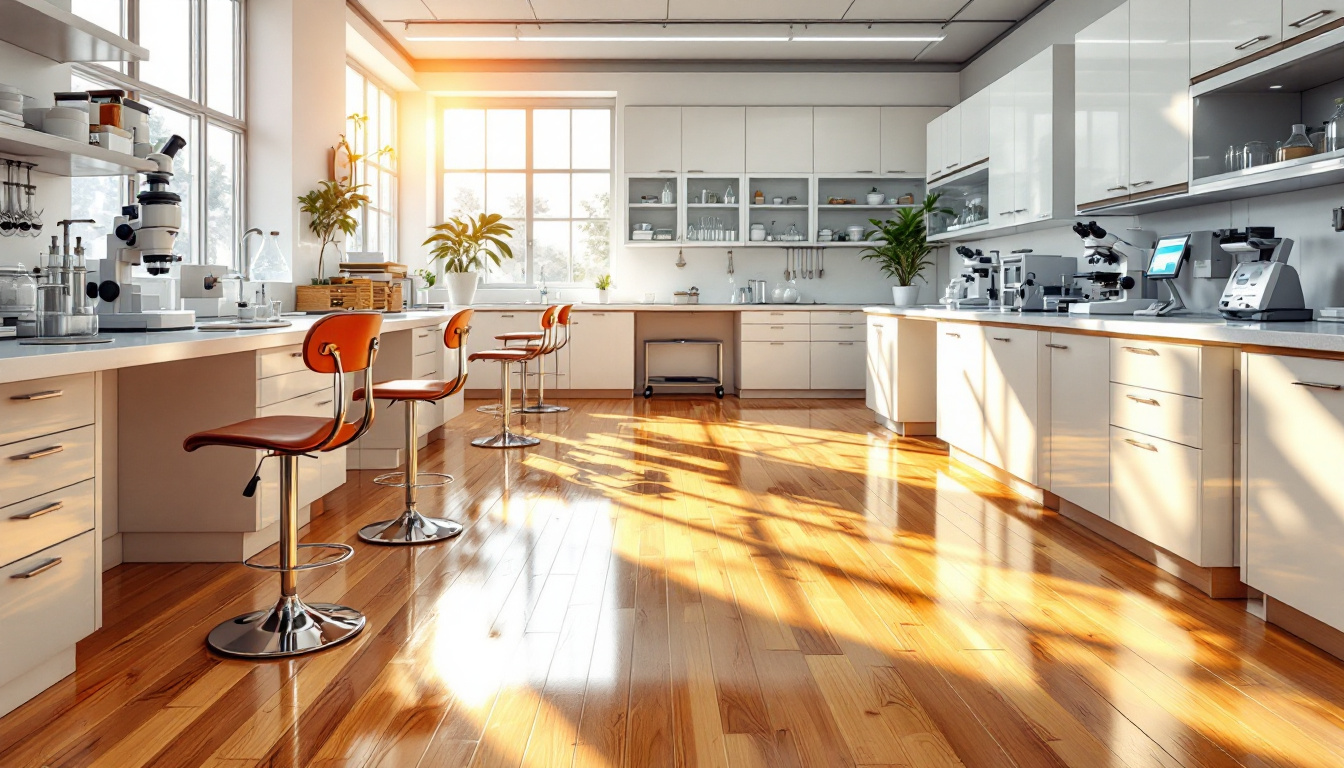
A pharmaceutical laboratory faced challenges in maintaining safety standards and operational efficiency due to frequent chemical spills and the subsequent wear on their existing flooring. Seeking a solution that combined durability with chemical resistance, the laboratory installed engineered wood flooring treated with a robust chemical-resistant finish. This strategic choice significantly enhanced the laboratory’s operational environment, demonstrating the tangible benefits of wood flooring in such settings.
How did this flooring installation improve safety standards?
The engineered wood flooring’s chemical-resistant finish created a non-permeable barrier, effectively preventing chemical penetration and subsequent floor degradation. This barrier ensured that spills could be quickly and safely cleaned, reducing the risk of slip hazards and maintaining a stable working surface. The robust finish also met stringent safety guidelines, offering peace of mind and compliance with regulatory standards.
What impact did the flooring have on cost savings?
By eliminating the frequent need for repairs and replacements caused by chemical damage, the laboratory experienced considerable cost savings. The wood flooring’s longevity reduced maintenance expenses and downtime, allowing the facility to allocate resources more efficiently. Additionally, the flooring’s resilience minimised interruptions to daily operations, further contributing to cost-effectiveness.
How was workflow efficiency enhanced?
The installation of chemical-resistant wood flooring facilitated an uninterrupted workflow, as the durable surface withstood the demands of a busy laboratory environment. Employees reported a more pleasant and functional workspace, with the flooring’s aesthetic appeal contributing to an improved atmosphere. The wood’s natural warmth and comfort also played a role in enhancing worker satisfaction and productivity, highlighting the multifaceted benefits of this flooring choice.
Final Words
Laboratory wood flooring provides an essential chemical-resistant solution, ensuring a safe environment amidst potential chemical spills. Balancing chemical resistance with aesthetic and environmental benefits, wood flooring stands out against alternatives like epoxy resin and vinyl. Proper installation by experts, such as Ryan’s Restoration, guarantees durability and safety, and regular maintenance protects these investments for long-term use. Real-world applications further highlight the value and efficiency of these flooring solutions. By choosing laboratory wood flooring, one can enhance both functionality and safety in research spaces, offering an effective solution in demanding environments.
FAQ
What is the price of laboratory wood flooring chemical-resistant solutions?
The price of chemical-resistant wood flooring solutions for laboratories varies based on several factors, including material type, finish, and installation complexity. It’s best to get a customised quote from suppliers.
What is the best flooring for chemical resistance in laboratories?
The best flooring for chemical resistance in laboratories includes epoxy resin and vinyl. These options are known for their strong resistance to chemicals, durability, and ease of maintenance.
What is the best material for covering a laboratory floor?
For covering laboratory floors, epoxy resin, vinyl, and wood with chemical-resistant finishes are excellent materials. Each offers unique advantages in resilience, cost, and installation flexibility.
Is hardwood flooring chemically treated?
Yes, hardwood flooring can be chemically treated to enhance its resistance to chemicals, making it suitable for certain laboratory environments where spills may occur.
What are the requirements for laboratory flooring?
Laboratory flooring must be durable, low-porosity, chemical resistant, and safe to ensure efficient and secure operations. Proper installation is essential to maintaining these properties over time.
